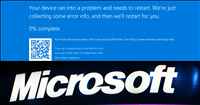NXP says its single-chip solutions will drive next wave of ultra low-cost handsets
04 Sep 2007
Mumbai: NXP Semiconductors today announced its Nexperia PNX4903 GSM / GPRS-optimised multimedia solution for the ultra low-cost (ULC) segment of the mobile handset market. Delivering complete system-level operation in a single monolithic IC, the PNX4903 provides the highest levels of integration and performance and is the most cost-effective solution available for multimedia-enabled ULC handsets.
Representing
the ULC+ concept, NXP says its solution raises the bar
and allows handset OEMs / ODMs to deliver new levels of
rich, multimedia content to entry-level cell phone users
in a reliable, cost- and power-efficient package.
The Nexperia PNX4903 addresses competitive ULC market
demands for the combination of RF performance, power consumption
metrics, features and total cost. Superior RF performance
allows significant flexibility in network planning, particularly
in emerging markets where network coverage tends to be
sparse in rural areas. In over-subscribed urban areas,
phones that have sub-par RF performance can create interference
on neighbouring channels, thereby impacting overall cellular
network efficiency.
Superior
power consumption performance facilitates consistent phone
operation as the battery discharges while allowing for
industry-leading standby and talk times. The smaller batteries
that can be utilised also allow for thinner and lighter
handset designs.
In addition, the ULC+ multimedia solution enables a music
phone with colour screen, MP3 playback, removable flash
memory card and FM Tuner for a total bill of materials
under $20.
While traditional multi-chip handset designs require three times the number of external components on a more complex printed circuit board, the PNX4903 allows a complete, dual-band GSM / GPRS modem to be realised with just 49 external components on a low-cost, four-layer printed circuit board (PCB). The only external ICs needed are a power amplifier and memory.
By
integrating the analog and digital base bands, RF transceiver,
power management, and audio circuitry in a monolithic
IC, the PNX4903 solution delivers the lowest bill of materials
and PCB footprint, along with the lowest manufacturing
and test costs of any solution currently available.
"As wireless connectivity continues to proliferate
across the entire globe, the definition of an ultra low-cost
handset is rapidly evolving along with the expectations
of consumers.
Entry-level
users in places like China, India and Latin America now
desire the same value-added applications available in
today''s more mature wireless markets," said Diwakar
Vishakhadatta, vice president, entry-level products, business
line cellular systems, NXP Semiconductors. "In light
of this evolution, NXP has introduced the Nexperia PNX4903
ULC+ solution to raise the bar for ULC handsets and bring
new features like high-quality music playback to users
while still meeting the same level of affordability and
performance necessary in emerging markets."
"During the next phase of rapid expansion of mobile
communications in the rural and semi-urban areas of India,
NXP would like to fulfill the aspirations of first-time
handset users by offering the next experience in multimedia
at a ULC price point," said Ashok Chandak, director
of Global Sales, NXP Semiconductors, India. "Building
on the successful deployment of ULC phones based on NXP''s
current generation chipsets in India, handset manufacturers
and operators can now deliver differentiating and value-added
features using the Nexperia PNX4903 ULC+ multimedia solution.
Furthermore, we are proud that the NXP India team played
a part in the development of the PNX4903 subsystem and
were able to offer their insight regarding the specific
needs of the Indian market."
The PNX4903, built on the AeroFONE single-chip heritage
from Silicon Labs'' cellular communications business, is
developed using a low power, high-performance CMOS process
and incorporates an industry-leading ARM926-EJS MCU core
and high-performance DSP core. The comprehensive solution
fully integrates analog and digital baseband, RF transceiver,
power management unit (PMU) subsystem, battery-charging
circuitry, audio subsystem and all voltage regulators
(LDOs and DC/DC) in a single chip.
The PNX4903 hardware reference design is accompanied by a flexible, pre-integrated and validated software complement that reduces R&D expenses and speeds time to market. Other features of the PNX4903 include:
- SAIC
support for increased network capacity
- Dual-band
Rx and Tx (850 or 900/1800 or 1900)
- MP3
playback with support for SD card
- 40
voice polyphonic MIDI and MP3 ringtones
- Alternate
40-kS/s audio mode for polyphonic ringtones
- Microphone
amplifier with two differential inputs
- Two
differential audio output amplifiers
- HR / FR / EFR / AMR vocoders
- Speaker phone noise suppression and echo cancellation
NXP
is a top 10 semiconductor company founded by Philips more
than 50 years ago. Headquartered in the Netherlands, the
company NXP creates semiconductors, system solutions and
software that deliver better sensory experiences in mobile
phones, personal media players, TVs, set-top boxes, identification
applications, cars and a wide range of other electronic
devices.












.jpg)


.jpg)



.jpg)










